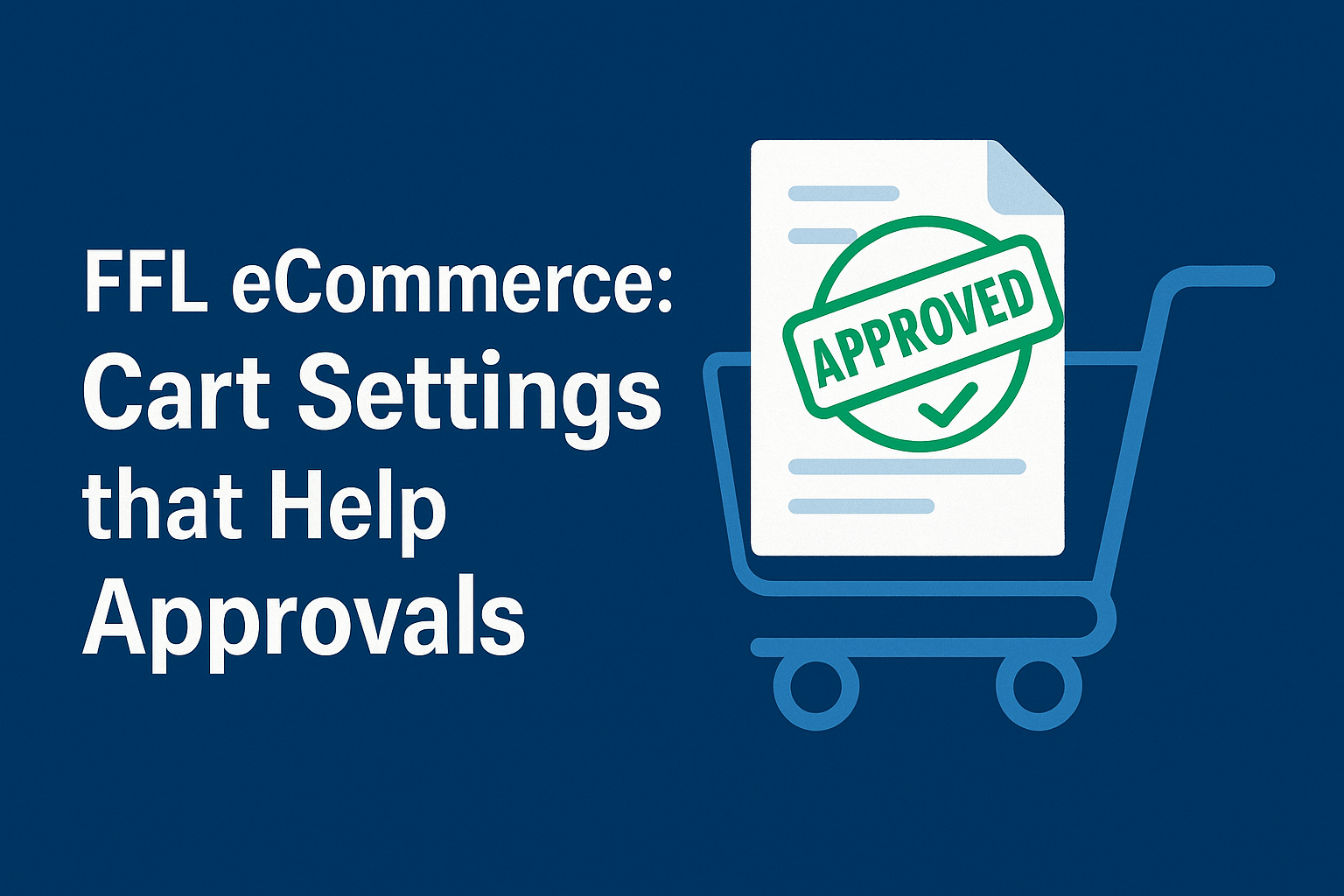FFL eCommerce: Cart Settings that Help Approvals (and Conversions)

For any business that operates in the modern world, eCommerce is more than just a sales channel; it’s a lifeline. For Federal Firearm Licensees (FFLs), having the right eCommerce setup can significantly impact approval speed, uptime, chargebacks, and integration capabilities. In this article, we’ll explore how to optimize your cart settings to facilitate quicker approvals and higher conversion rates while ensuring compliance with industry regulations.
Understanding Approval and Underwriting
When it comes to FFL eCommerce, approval and underwriting are the first hurdles you need to clear. High-risk industries like firearms often face stringent scrutiny from payment processors.
Key Considerations:
- Documentation: Ensure you have all necessary licenses and permits readily available. This includes your FFL and any state-specific licenses.
- Transaction History: A solid transaction history can expedite the approval process. If you’re new, consider starting with small transactions to build credibility.
- Transparent Business Model: Clearly outline your business model and sales practices. This can help processors understand your operations better and may lead to faster approvals.
Gateway and POS Options
Selecting the right payment gateway and Point of Sale (POS) system is crucial for FFLs. Not all gateways are created equal, especially when it comes to high-risk industries.
Top Gateway Features:
- High-Risk Friendly: Look for gateways that openly cater to high-risk merchants. They understand the unique challenges and are more likely to offer favorable terms.
- Integration Capabilities: Ensure that your gateway can easily integrate with your eCommerce platform. Seamless integration can reduce friction in the checkout process.
- Real-Time Processing: Choose a gateway that offers real-time transaction processing. This minimizes downtime and enhances customer experience.
Memberships and Recurring Billing
Many shooting ranges and gun stores offer membership programs and recurring billing options. Setting these up correctly can lead to increased customer loyalty and steady revenue streams.
Benefits of Memberships:
- Consistent Revenue: Recurring billing ensures a predictable cash flow, which can be vital for managing business expenses.
- Customer Retention: Memberships can help create a loyal customer base, reducing churn and increasing lifetime value.
Fraud and Chargebacks
The firearms industry is particularly susceptible to fraud, making it essential to implement robust security measures. Chargebacks can be costly and detrimental to your business reputation.
Strategies to Mitigate Fraud:
- Advanced Verification: Utilize AVS (Address Verification System) and CVV checks to help prevent fraudulent transactions.
- Clear Return Policies: Having a transparent return policy can help reduce chargebacks. Make sure customers understand the terms before completing a purchase.
- Fraud Detection Software: Consider investing in software that specializes in fraud detection for eCommerce businesses.
Compliance: PCI, KYC/AML, and Descriptors
Compliance is non-negotiable for FFLs. Ensuring that you adhere to PCI (Payment Card Industry), KYC (Know Your Customer), and AML (Anti-Money Laundering) regulations is crucial for maintaining your merchant account.
Compliance Checklist:
- PCI Compliance: Ensure your eCommerce platform complies with PCI standards. This includes secure storage and processing of cardholder data.
- KYC and AML Procedures: Implement procedures to verify customer identities and monitor transactions for suspicious activity.
- Clear Descriptors: Make sure your transaction descriptors are clear to customers. This can help reduce chargebacks related to confusion over charges.
Pricing Models
Understanding the pricing models offered by payment processors is essential for budgeting. Transaction fees, monthly fees, and chargeback fees can vary widely, especially in the high-risk space.
Common Pricing Structures:
- Flat-Rate Pricing: Simple and predictable, but may not be the best option for high-volume merchants.
- Interchange-Plus Pricing: Offers transparency and can be more cost-effective for businesses with a higher transaction volume.
- Tiered Pricing: Can be confusing, as it categorizes transactions into different tiers with varying fees.
Case Study: Range Memberships
Let’s consider a shooting range that offers monthly memberships. By implementing a recurring billing system through a high-risk-friendly gateway, they were able to streamline their payment process.
Results:
- Increased Membership Sign-Ups: With an easy sign-up process, they saw a 30% increase in memberships within three months.
- Reduced Chargebacks: Clear communication about membership terms reduced chargebacks from confused customers by 50%.
- Consistent Revenue Stream: Monthly billing provided a reliable income, allowing for better financial planning.
TL;DR
- Approval Speed: Ensure you have all necessary documents and a transparent business model.
- Gateway Options: Choose a high-risk-friendly gateway with integration capabilities and real-time processing.
- Memberships: Consider recurring billing for consistent revenue and customer loyalty.
- Fraud Prevention: Implement verification checks and clear return policies to reduce fraud and chargebacks.
- Compliance: Stay compliant with PCI, KYC/AML regulations, and use clear descriptors.
- Pricing Models: Understand the different pricing structures to choose the most cost-effective option.
In the competitive landscape of the shooting sports industry, having the right eCommerce setup can make all the difference. By optimizing your cart settings and choosing a high-risk-friendly processor and gateway, you can enhance approval speeds, reduce chargebacks, and ultimately boost conversions.
For a free statement review or to discuss your gateway options, sign up with us today. Let’s ensure your business is set up for success!


